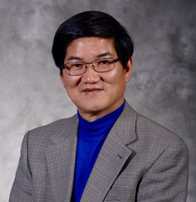Speaker: Long-Qing Chen
Place: Conference Room 326, Building Chao Kuang Piu, School of Materials Science & Engineering
Title: Discovery and Design of Mesoscale Structures for Optimum and Novel Properties Guided by Phase-field Simulations
Time: 17th Dec., 2019, 15:00 ~ 16:30
Inviter: Yongjun Wu
Abstract: Materials research is largely concerned with the study and manipulation of the spatial and temporal evolution of structural, magnetic, electric polarization, and chemical domains in a material as well as their responses to changes in environmental conditions. Much of the existing applications of phase-field method has been focused on modeling, reproducing, and understanding the evolution of experimentally observed materials microstructures during processing and in-service conditions or to test analytical theories. In order to establish phase-field method as one of the mainstream computational materials and physics methods for materials discovery and design, there is a need to focus our focus from purely “reproducing and understanding” experimental observations to “predicting mesoscale microstructures” and “guiding the synthesis and processing of materials to design their optimum properties and performances”. This presentation will discuss a few examples on our recent attempts to employ the phase-field method to not only to interpret and understand experimentally observed ferroic domain patterns but also to provide guidance to experimental synthesis and characterization to discover new mesoscale domain states of ferroic materials or achieve dramatically enhanced properties. Recent success examples of theory-guided design of materials include the discovery of polar vortex lattices, skyrmions, and unusual negative capacitances in ferroelectric superlattices, synthesis of record-high piezoelectricity in ferroelectric relaxor ceramics and single crystals, and the discovery of simultaneous near-perfect light transparency and ultrahigh piezoelectricity through AC poling.
Long-Qing Chen

Chen is Hamer Professor of Materials Science and Engineering, Professor of Engineering Science and Mechanics, and Professor of Mathematics at Penn State and the Editor-in-Chief for npj Computational Materials by Springer-Nature. He received his Ph.D. from MIT in 1990, M.S. from Stony Brook University, and B.S. from Zhejiang University, and joined the faculty at Penn State in 1992. He has published over 650 papers (with > 41,000 total citations and H-index of 96 according to the Google Scholars) in the area of computational phase transformations and microstructure evolution of structural metallic alloys, functional oxide thin films, and energy materials and is a Clarivate Analytics Highly Cited Researcher in 2018 and 2019. He received the 2014 MRS Materials Theory Award, a Guggenheim Fellowship in 2005, a Humboldt Research Prize in 2017, 2011 The Minerals, Metals and Materials Society (TMS) EMPMD Distinguished Scientist Award, and 2008 ASM International Silver Medal. He is a Fellow and Life Member of TMS and a Fellow of the Materials Research Society (MRS), American Physical Society (APS), American Association for the Advancement of Sciences (AAAS), American Ceramic Society (ACerS), and ASM International (ASM).



